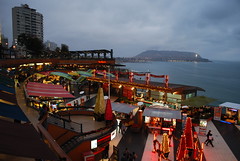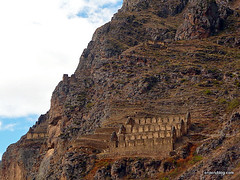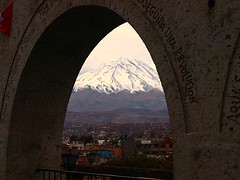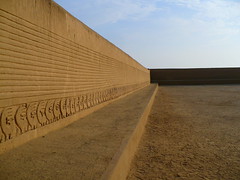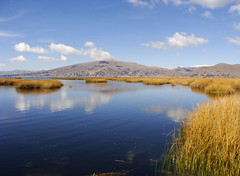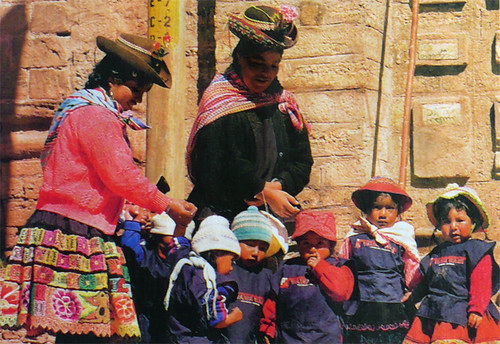Charming San Blas, Cusco
San Blas. A blend of ancient, colonial and modern, religious and decadent, peaceful and lively, traditional and new – the district is a bit of a mix to say the least. It’s a hippy hang out, an artists retreat, a backpacker’s home. It’s a tourist puller and a night-life mecca. A religious site that is home to an important parish church, and also a place where locals live in the same homes that have stood here on the same streets, high above Cusco, for centuries.
 In Inca times San Blas was outside the ceremonial centre of the city, past the Hatunrumiyoc and its 12 angled stone. To get there you had to go on past the Tullumayo river (now Choquechaca and Tullumayo streets) and through an agricultural area that separated the homes of the commoners from those of the elite and the ceremonial centre. This green space also helped outline the shape of the Puma the Inca city of Q’osco was shaped as. San Blas, or rather Tococachi as it was then called, was above the Puma’s shoulder blades and had fine views over the Inca-era plaza.
In Inca times San Blas was outside the ceremonial centre of the city, past the Hatunrumiyoc and its 12 angled stone. To get there you had to go on past the Tullumayo river (now Choquechaca and Tullumayo streets) and through an agricultural area that separated the homes of the commoners from those of the elite and the ceremonial centre. This green space also helped outline the shape of the Puma the Inca city of Q’osco was shaped as. San Blas, or rather Tococachi as it was then called, was above the Puma’s shoulder blades and had fine views over the Inca-era plaza.
Tococachi was a mix of simple homes and large farming terraces. Clear evidence of these wide terraces can still be seen. The Plazoleta de San Blas is one, and the San Blas church is built on it. Behind it is a huge vertical wall, now decorated with fountains, above which is the next level of the terraces. Here, on what is now Tandopata street but used to be a terrace, you will find another exposed wall with homes built higher above it. These homes are on an even higher terrace, and that wall is not a foundation, but a terraced wall holding back the soil.
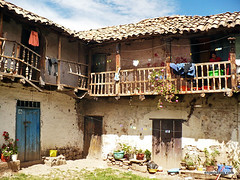
Spanish building
When the Spanish took control of the city, the indigenous of Tococachi stayed where they were. Their numbers were even swelled, not by other indigenous, but by ordinary Spaniards who moved in alongside them. It is this mix of cultures and influences that may give San Blas it’s special charm.
Weaving streets curve to adapt to the land, refusing to be ordered into the mandated Spanish grid pattern. Foundations of field stones used by the indigenous remain, but pretty Spanish colonial homes constructed from adobe grow out of them. San Blas’s architecture has become synonymous with traditional Cusqueño architecture – pretty doorways, balconies and windows in brilliant white walls with red tiled roofs.
No two streets are alike, and all are a joy to explore. This is something most visitors to Cusco do on their first day and the steep hills are something of a test of your body’s acclimatization to the altitude.
The church of San Blas, completed in 1562, but destroyed by an earthquake and rebuilt in the 1650s, is also special. No longer serving any particular deity, it is a profit-machine for the catholic church of Cusco who have turned it into an expensive tourist attraction. People pay to enter this building because it contains something very special. Before the turn of the century at the end of the 1600s, the parish bishop, Manuel Mollinedo y Angulo, ordered a new pulpit to be carved from cedar. The resulting work is considered by many to be the finest ever created in Peru’s vice-royalty and beyond.

Lower San Blas
In the lower parts of San Blas, small shops selling goods to hoards of tourists in the day give way to bars that open during the night. From hippy hangouts to Irish pubs to cocktail bars, there seems to be something for everyone and at night the streets are even busier than during the day.
Artists too have taken up residence in San Blas. Mendívil and Mérida are just two of the family names of artists focusing on religious art. Don’t miss the long-necked angels.
The charm of this part of the old Inca capital is captured in its steep streets and in the façades of its colonial buildings. Simple, humble but very beautiful, San Blas has become synonymous with Cusco, and any visit is sure to include it.
More Photos…
Tags: 1500s, 1600s, architecture, art, catholics, church, cusco, earthquake, san blas, spaniards, tococachi



